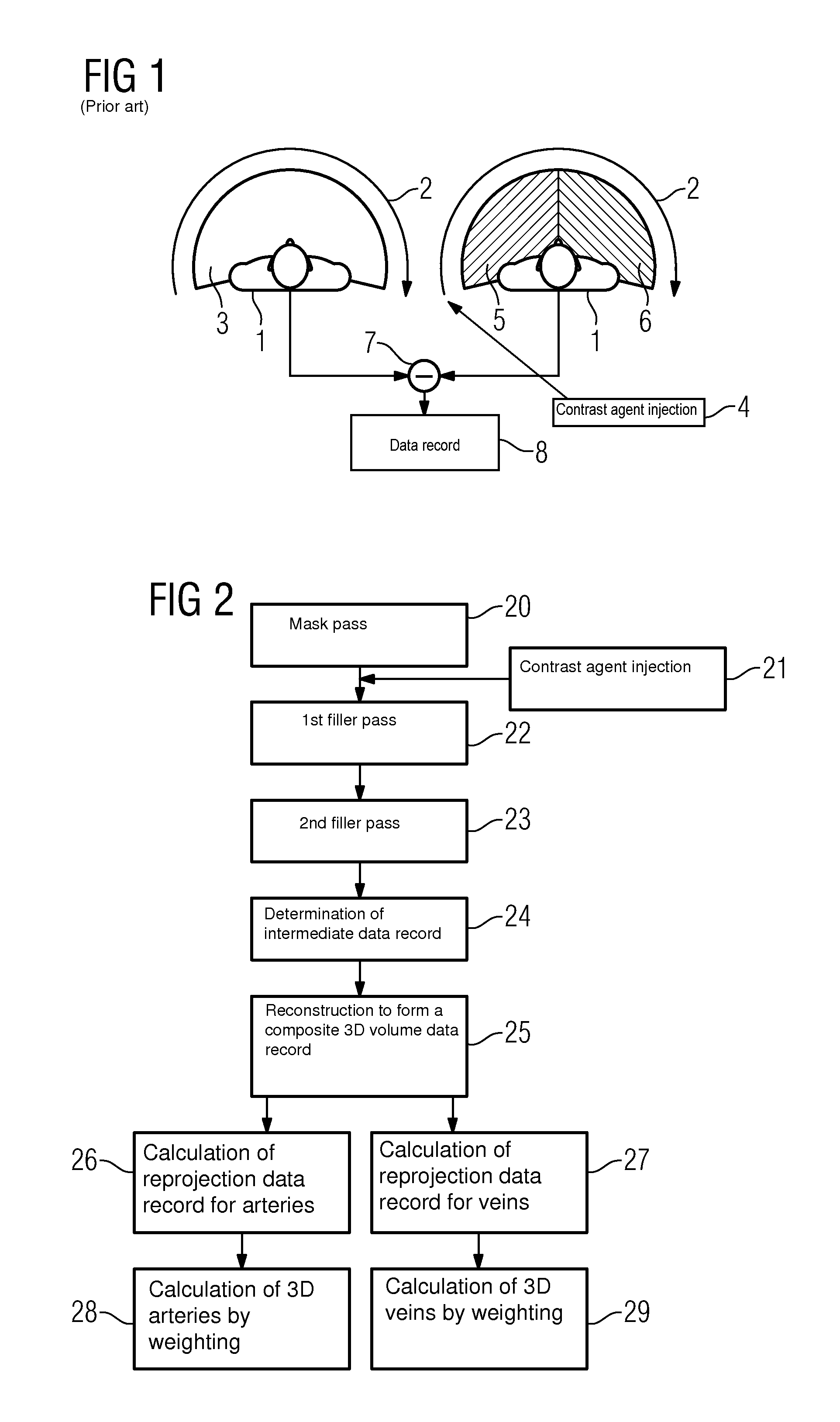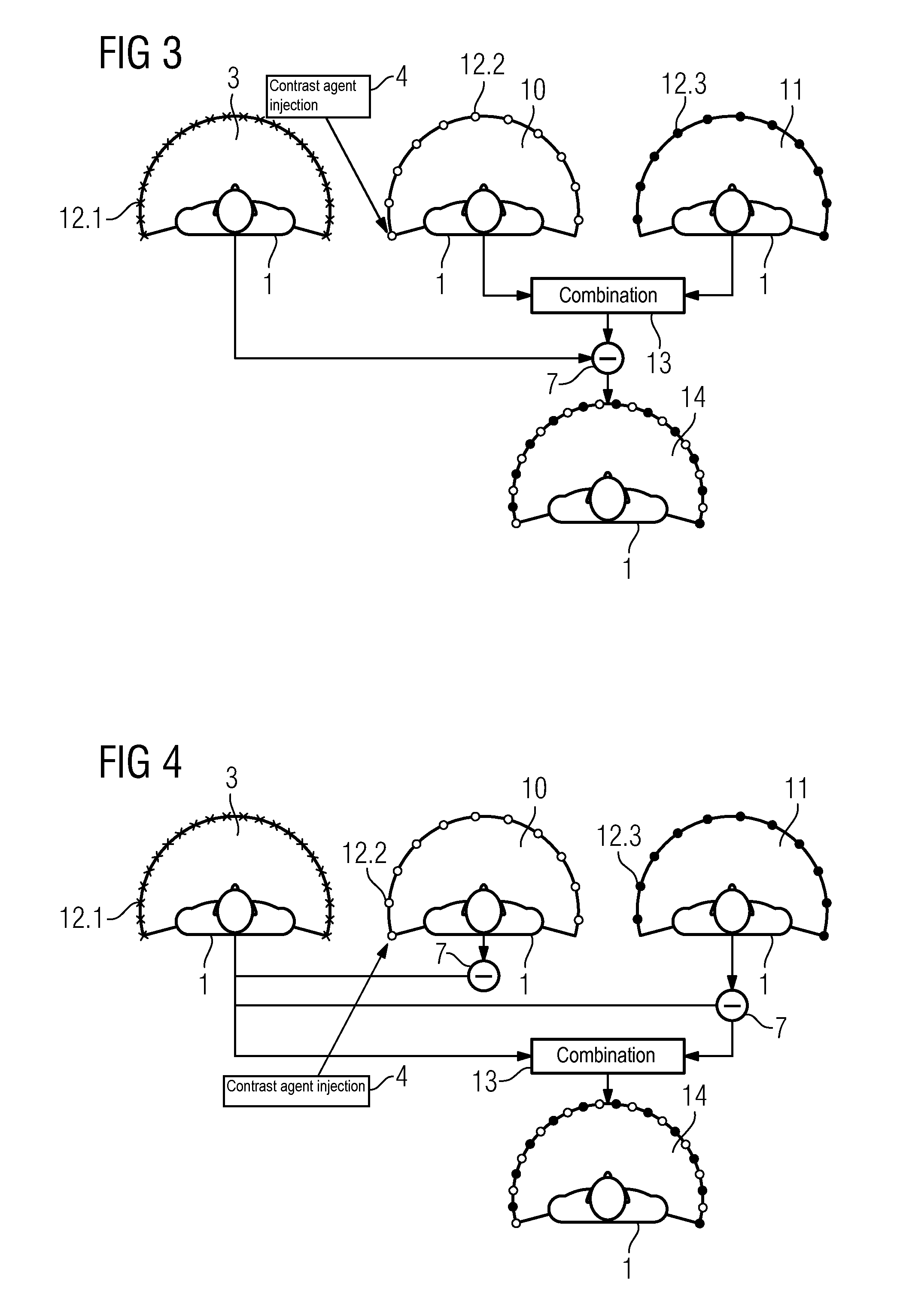Method and device for the separate three-dimensional representation of arteries and veins in an examination object and device
a three-dimensional representation and examination object technology, applied in the field of three-dimensional representation of arteries and veins in an examination object and device, can solve the problems that conventional 3d angiography fails to ensure adequate separation between arterial and venous vascular systems, and achieves the effect of fast and simpl
- Summary
- Abstract
- Description
- Claims
- Application Information
AI Technical Summary
Benefits of technology
Problems solved by technology
Method used
Image
Examples
Embodiment Construction
[0046]FIG. 1 shows the principle of the scanning of an examination object 1 according to the prior art. During a mask pass 3 a series of projection images is produced by a recording system circling 2 about an examination object, being recorded from an angular range of approximately 200°. The projection images are in particular recorded by a C-arm x-ray device, on which an x-ray source and an x-ray detector are permanently arranged. A contrast agent is then injected into the vascular system of interest by means of a contrast agent injection 4 and a so-called filler pass is then carried out. This filler pass contains the same number of projection images as the mask pass, which were likewise recorded at the same angular positions as during the mask pass.
[0047]Since in general the rotation time of such a C-arm is around 5 seconds, if a sufficient number of recordings are to be produced for a high-quality reconstruction but the arterial phase 5 of vascular contrasting only lasts around 2...
PUM
 Login to View More
Login to View More Abstract
Description
Claims
Application Information
 Login to View More
Login to View More - R&D
- Intellectual Property
- Life Sciences
- Materials
- Tech Scout
- Unparalleled Data Quality
- Higher Quality Content
- 60% Fewer Hallucinations
Browse by: Latest US Patents, China's latest patents, Technical Efficacy Thesaurus, Application Domain, Technology Topic, Popular Technical Reports.
© 2025 PatSnap. All rights reserved.Legal|Privacy policy|Modern Slavery Act Transparency Statement|Sitemap|About US| Contact US: help@patsnap.com



